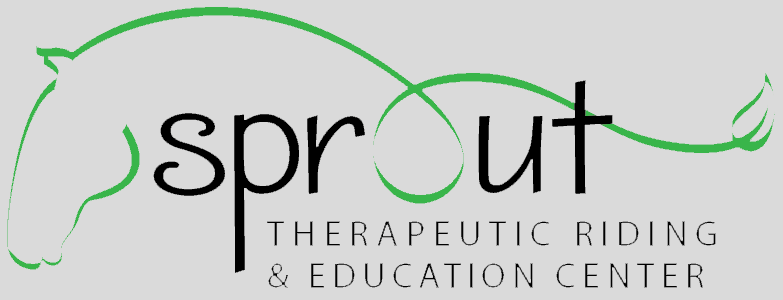Sprout offers equine movement as a therapy treatment strategy that focuses on use of the multidirectional movement of the horse as a catalyst to improve muscle tone, range of motion, timing, behavior, attention, arousal, coordination, balance, postural control, communication, and cognitive/linguistic functions. Carefully modulated, well cadenced equine movement offers the therapist a highly effective means of addressing impairments through facilitation of the physiological systems that cannot be achieved by a machine or duplicated in a clinic. Equine movement therapy is also known as hippotherapy and is a physical, occupational or speech therapy protocol that is a component of an integrated treatment plan of care prescribed by a licensed therapist to achieve desired therapy goals and improved functional outcomes.
Professional Staffing
- Certified Level II by the American Hippotherapy Association
- Staff holds B.S. and PhD in Physical Therapy
- VA Licensed PT
Innovative Adaptation
- Client-Centered Therapy
- Various Physical Supports Available
- Accessible Facility and Motorized Lift
- Focus on Possibility Rather Than Limitations
Educated Equines
- Carefully Selected Based On Temperament, Movement and Size
- Horse Choice is Based on Desired Outcomes
- Rhythm, Lateral Movement, Anterior-Posterior Movement and Concussion is Taken Into Account
Support for Success
- Horse Support
- Physical Support
- Cognitive Support
- Friendship-Building
- Community
Before participating, individuals need to consult with their physician. PATH Intl. riding centers require each prospective driver to present a complete medical history and a signed physician’s statement prior to a therapeutic riding session.
Who Can Receive Equine Movement Therapy?
Addresses Physical Needs Rather Than Skill Instruction
Equine Movement Therapy (EMT) utilizes the movement of the horse as a treatment strategy by a physical therapist to address functional limitations in patients with disabilities. Because a Licensed Physical Therapist is hands-on at all times, students as young as 2 may participate in this program. EMT is different from Therapeutic Riding in that it is focused solely on improving physical function through well-cadenced movement. The therapy professional works closely with the horse handler to manipulate various aspects of the horse’s movement, position, management style, equipment and types of activities to generate effective remediation protocols and to promote functional outcomes.
The movement of the horse facilitates trunk lateral flexion and pelvic rotation similar to the movement of normal human walking. This dynamic creates a motor memory learning environment. Research reports that the experience of riding a horse can be thought of as a massed but variable practice of 3000 to 5000 repetitions of a postural challenge per 45 minute of treatment.
Registration Form